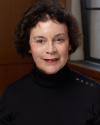Carole Terry, renowned organist and former longtime UW professor of Organ Studies, presents a lecture, "How the body works when playing piano, organ, or harpsichord.”
The series, co-sponsored by the School of Music and the Seattle Chapter of the American Guild of Organists, is made possible with support from the Paul B. Fritts Endowed Faculty Fellowship in Organ.
ABSTRACT
To play any keyboard instrument, organ, piano and harpsichord, requires physical exercise and stamina. When playing, all the muscles of the arms and legs are working in a coordinated way depending on their position and movement sustained. Various texts have been written for piano that include reference to specific muscles and what they do in the act of keyboard playing. However, little has been written specifically about the technical approach to repertoire from the standpoint of muscular usage, practice, and style.
If keyboardists understand the technical and physiological aspects of the body, it will enhance their ability to identify which muscle groups combine to make certain musical gestures in a piece or phrase. Paying attention to the physical act of playing will help them to achieve their musical goals and to play more efficiently.
This lecture will focus on select muscular demands of organ, piano and harpsichord playing by referring to various parts of the body and their roles in the following topics: (1) Balance; sitting on the bench; (2) Leg bones, muscles, and pedal technique; (3) Back muscles and arm placement; (4) Muscles and bones of the hand, fingers, and arm. Finally, specific pieces will be studied to illustrate their musculature demands and strength required. Also, included will be various methods to test for the strengths of certain muscle groups as well as a few select exercises for strengthening that could be used as practice warm-ups
Upcoming Events in this Series
Sat. May 4, 2024: Kimberly Marshall: The Organ Works of J.S. Bach
Biography

Carole Terry's career as a renowned performer and pedagogue of the organ and harpsichord has taken her to many cities and universities throughout the United States, Europe, and the Far East. Especially known for her performances and recordings of German Romantic music, she is also an expert on the physiology of keyboard performance -- the subject of her forthcoming academic work.
As a performer and master teacher, Terry participated in the Bamboo Organ Festival, in Manila, Philippines, as well as the Attersee Barock Akademie, Schleswig-Holstein Musik Festival, in Lübeck, Germany. She has also been involved in various summer academies, such as the International Summer School for Young Organists in Oundle, Great Britain and the Mount Royal College Organ Academy and International Summer School in Calgary, Canada. A frequent judge for competitions, Terry has adjudicated the prestigious International Musachino Organ Competition in Tokyo and in 2003, the Third Mikael Tariverdiev International Organ Competition.
In the United States, Terry has participated in conferences and seminars such as the San Anselmo Organ Festival, The Historical Organ in America (Arizona), the Oregon Bach Festival, and the Montreat Festival of Worship and Music (North Carolina). She has been a featured recitalist at many conventions of the American Guild of Organists.
As Resident Organist and Curator for the Seattle Symphony from 2000 to 2003, Terry helped inaugurate the new C.B. Fisk organ in Seattle's acclaimed Benaroya Hall, playing many solo concerti, in addition to monumental works for organ and orchestra. In 2004, she was honored to be the first American organist to perform in Perm, Russian Federation, on the new Glatter-Götz Organ of the Perm Concert Hall. In 2006, Terry performed on the newly installed Wolff organ in Christ Church Cathedral, Victoria, B.C., as part of an international conference sponsored by the Westfield Center for Keyboard Studies and Christ Church Cathedral.Her recent convention and concert appearances include the American Guild of Organists Pedagogy Conference in Knoxville, Tennessee; the McGill Summer Organ Academy in Montreal; and recitals in San Francisco, Seattle, and New York. Terry's recordings include Brombaugh Organs of the Northwest and The Complete Organ Works of Johannes Brahms (based on the Henle edition) for the Musical Heritage label. As a harpsichordist, she recorded works of Albright, Persichetti, Cowell, and Rorem for CRI, and baroque chamber music for Crystal Records (with violist Yitzhak Schotten). Her most recent recording, Carole Terry in Schwerin, is a two-CD set of German romantic organ music recorded on the notable 1871 Ladegast organ at Schwerin Cathedral, Germany.
Terry served as Professor of Organ and Harpsichord at the University of Washington School of Music in Seattle for forty years, retiring in 2019. She is on the Board of Governors of The Westfield Center for Keyboard Studies, a national resource for the advancement of keyboard music, and chairs the Center's Concert Scholar Committee. As a member of the College of Mentors at The John Ernest Foundation, her role is to promote the enrichment of young organ scholars, organ performances, and the encouragement of organ studies.
